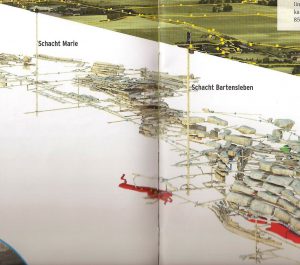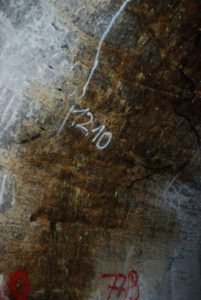Deep geological repository
One method for the final disposal storage is the deep geological repository method. Surprisingly, there was also an ocean disposal method. However, this method has environmental problems and is no longer permitted by international agreements. The deep geological repository method basically digs a deep hole and stores the waste in the hole. This method is considered as the most practical method.
The deep geological repository method blocks the radiation by two
methods.
- Artificial barrier: container, concrete wall
- Natural geological barrier: stratum
Most of the radiation blocking effect is by the natural barrier.
The level of the waste and the criterion of how deep the waste should be stored depends on the country. Some examples are following:
Low-, Middle-level waste
- shallow (a few hundreds meters (e.g., Japan))
- middle
- deep (around 1000m (e.g., Germany))
High-level waste (+TRU waste)
- deep geological storage
The stratum suited for high level nuclear waste are following. Each has own characteristics.
- Clay stratum
Disadvantage: This stratum has low thermal conductivity and the
heat would not be well diffused. Therefore, the stratum could be
dried out and might generate cracks. The waste would possibly
leak through such cracks. - Granite stratum
Disadvantage: The rock is relatively hard, thus the cost of
digging is quite high. There could be ground water and the water
diffuses the contamination of the waste. - Rock salt stratum
Advantage: This stratum has high thermal conductivity and the
heat of the high level waste is well diffused.\\
Disadvantage: It is highly possible to have ground water since it
was a sea in the past. The water diffuses the contamination of
the waste.
For long term geological waste management, the following conditions are necessary for the stratum to stably store the waste.
- Uniformity. (If the stratum is uniform, there is less possibility
to have cracks, or less possible to cause them.) - No ground water. (Ground water possibly diffuses the waste.)
- No movement. (We cannot stably store the waste in moving strata.)
Ground water and cracks may distribute the radioactive contamination, especially for the long term waste storage. Therefore, the non existence of ground water is an important condition.
Example of long term deep geological repository
The deep geological repository method typically consists in digging two vertical holes and connecting them with a tunnel under the ground where the stratum is suited for long term waste management. The waste will be stored in the tunnel.
Figure 4 shows the long term storage facility for low-/middle-level waste in Morsleben in the Eastern Germany time. You can see the huge storage faciliy under the ground. Later the government decided to stop using it and closed the Morsleben’s storage facility since there is a danger of rockfall for the rocksalt stratum.

Gorlben (in Germany) had a plan to build a general waste processing facility. First, the central interim storage facility has been built. Then, a facility was built to check that whether the rocksalt stratum of this area is suitable for the long term storage. However, there were some questions regarding the suitability, the investigation was suspended and reopened, repeatedly. The government decided to start over the process of choosing a location. A committee that will choose the candidate location has been established at the parliament.
Picture: oil in the stratum (Gorleben, Germany)

Figure 5 shows a pictures of stratum in the tunnel of Gorleben. The black part is oil and that means the rocksalt stratum is not uniform.